Growing up hungry: The facts about malnutrition
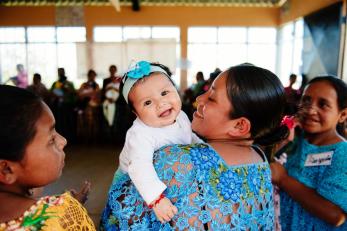
Editor's note: This article was originally published on November 4, 2015; it was updated on May 20, 2018, to reflect the latest information.
Some 815 million people in the world do not have enough food to lead a healthy active life. That's just over one in nine people on Earth.
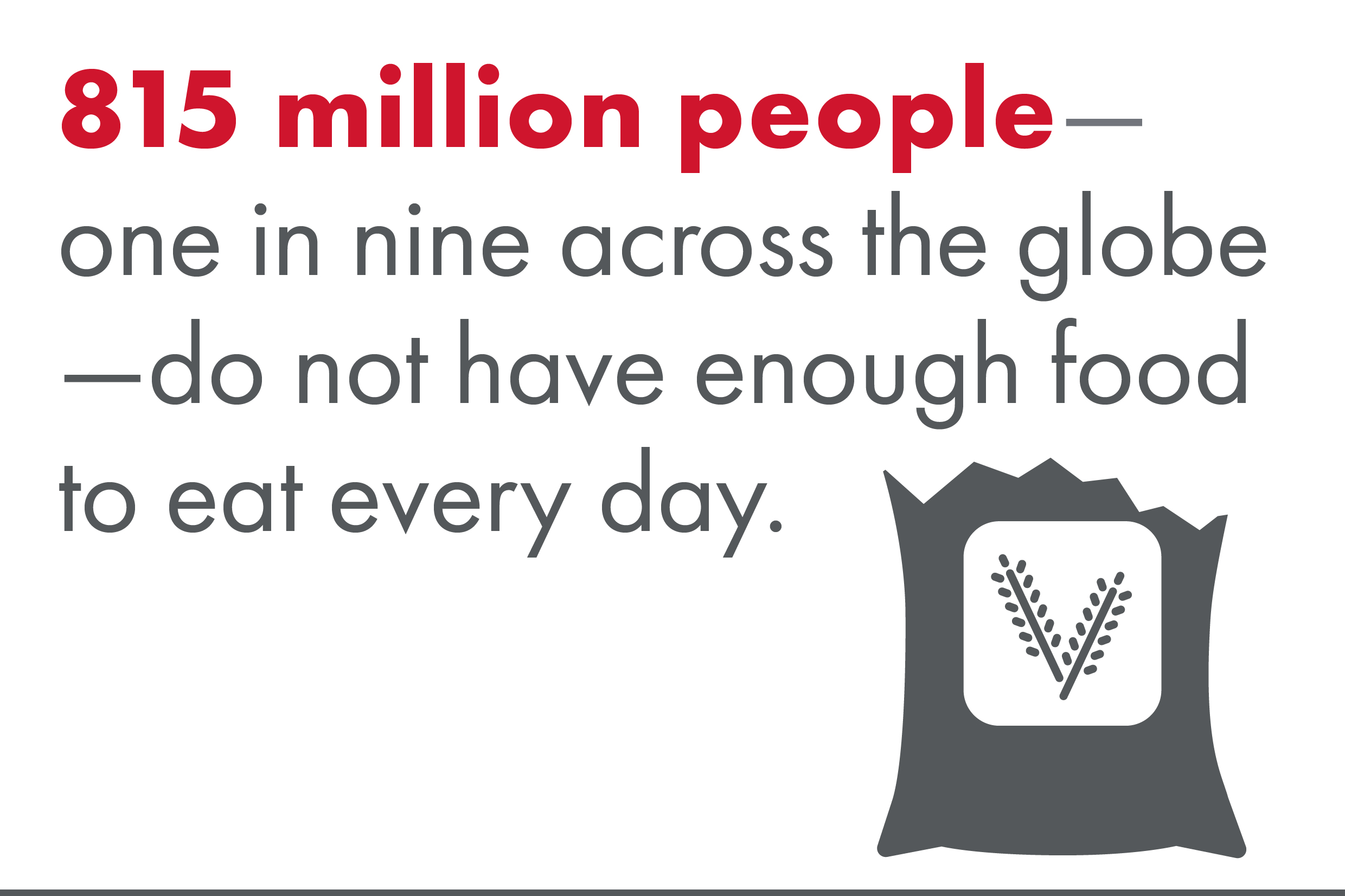
Get the facts about global hunger ▸
For families around the world, hunger means more than going to bed with an empty stomach. Getting the right kind and quantity of food at different stages of life can mean the difference between becoming a healthy adult — or not.
Growing up with hunger and malnutrition can inhibit development, make it hard to focus in school, and later contribute to complications during pregnancy.
What are the root causes of hunger and malnutrition? And how does it affect the different stages of a person's life?
Learn more about the effects of hunger and malnutrition below, and what we are doing to stop both below.
Growing up hungry: Infants
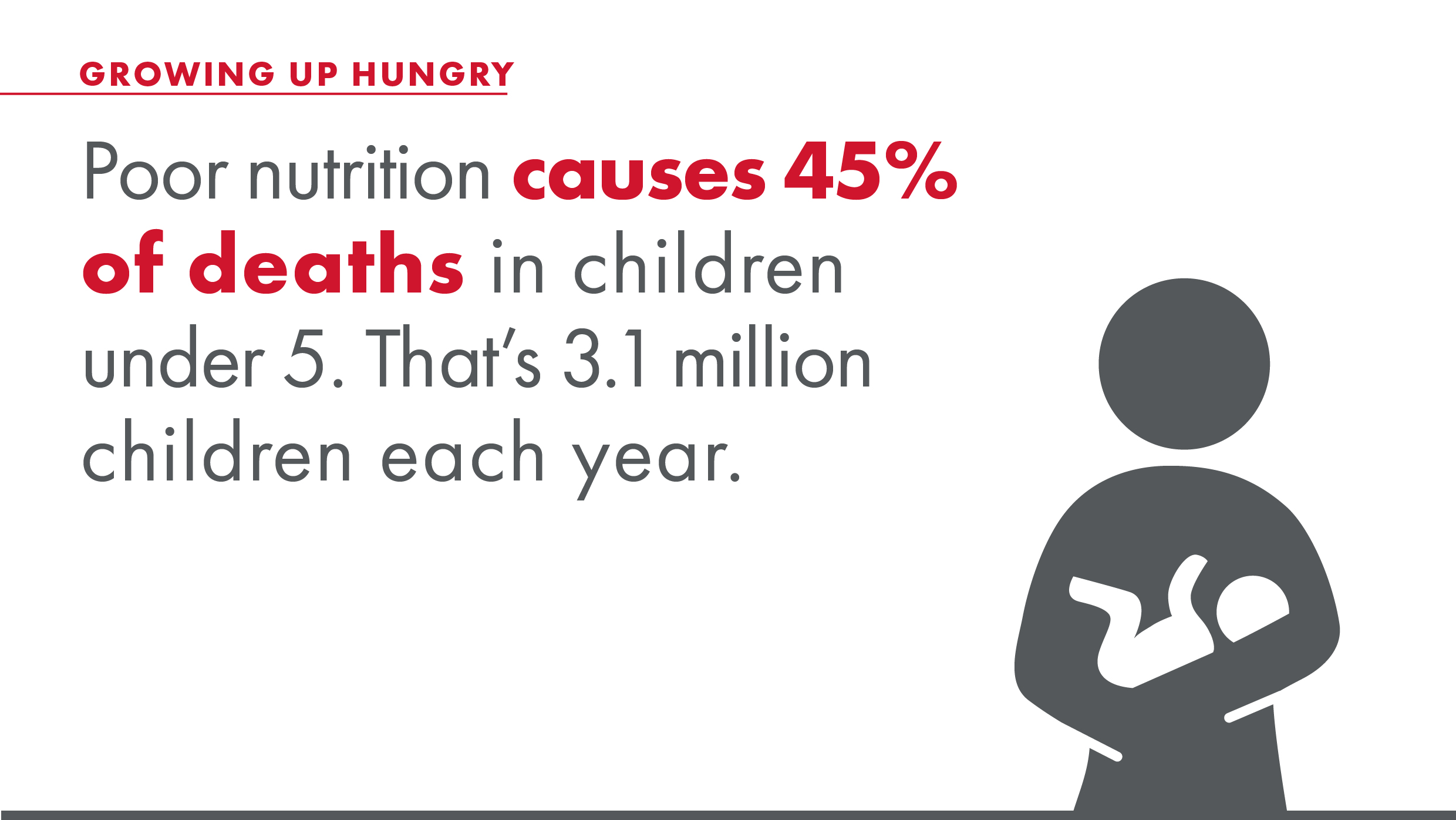
The 1,000 days from the beginning of a woman’s pregnancy to her child’s second birthday are some of the most critical for human nutrition and growth.
If an infant doesn’t receive enough food or proper nutrition during this time, the effects often can’t be reversed.
“Especially for children under two, the effects of chronic malnutrition can be lifelong. Those who survive may have reduced resistance to disease and infection later in life,” said Cathy Bergman, Mercy Corps' director of health nutrition and food systems.
An infant who doesn’t receive the right nutrients during this window of time has a higher risk of dying during infancy and is also more likely to suffer from developmental delays and chronic health issues.
These risks are especially prevalent in Africa and Asia, where malnutrition is widespread and severe. Twelve per cent of all the world’s acutely malnourished children live in the Democratic Republic of Congo alone. And in countries like the Central African Republic and Pakistan, more than 40 per cent of children are stunted. The number is even higher in Afghanistan, where 60 per cent of children have impaired growth.
When infants do get the nutrition they need, they are more likely to hit mental and physical development milestones on time and are less likely to become sick.
Malnutrition fact: Almost one in every 15 children in developing countries dies before the age of 5, most of them from hunger-related causes.
Through Mercy Corps' malnutrition and hunger programmes, we promote the World Health Organization’s recommendation: exclusive breastfeeding until a baby is six months old, with the addition of healthy complementary foods after six months. However, following these recommendations can be challenging in some places.
Breastfeeding is estimated to be the single largest countermeasure against child mortality, but mothers in many developmental contexts don’t have access to basic prenatal or medical care, let alone education about nutrition and beneficial feeding practices. They may choose to feed their babies water or tea as their mothers did, or follow other cultural norms that are customary in their society but not necessarily best for their children. Only around 40 per cent of infants around the world were exclusively breastfed in 2016.
A lack of knowledge about home hygiene, diet diversity and food preparation can also contribute to malnutrition.
“Generally, you want to make sure that the food is safe, and that you’re using clean water to wash the food. Introducing fruits, vegetables and dairy products is also important,” said Bergman. “In many places, there’s a reliance on a staple grain, but we want to make sure that’s not the only thing.”
In many of the places where we work, like Niger and Ethiopia, staple grains like millet and sorghum are the main part of most meals. With such a limited diet, young children are at risk for serious nutritional deficiencies.
Our work in these places encourages breastfeeding and helps people learn about the importance of diet diversity, as well as how to grow fruits and vegetables to feed their children.
Our impact
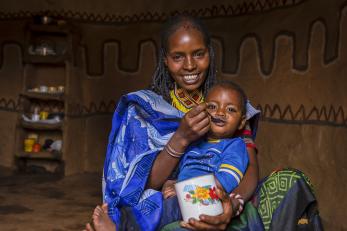
Dhaki, 25, and her family live in the lowlands of Ethiopia, where poverty and recurring climate disasters, like drought, make hunger and malnutrition a constant threat. Almost 8 million people need emergency food assistance in Ethiopia, and around 3.5 million children are malnourished.
When we met Dhaki, her three young children weren’t eating enough each day, and the food they did eat wasn’t very fresh. But through a Mercy Corps programme in her area, she learned about the importance of breastfeeding — and how to incorporate sanitised milk, porridge, eggs and potatoes into the family diet. Now, everyone in her family is healthier and stronger.
Growing up hungry: Children
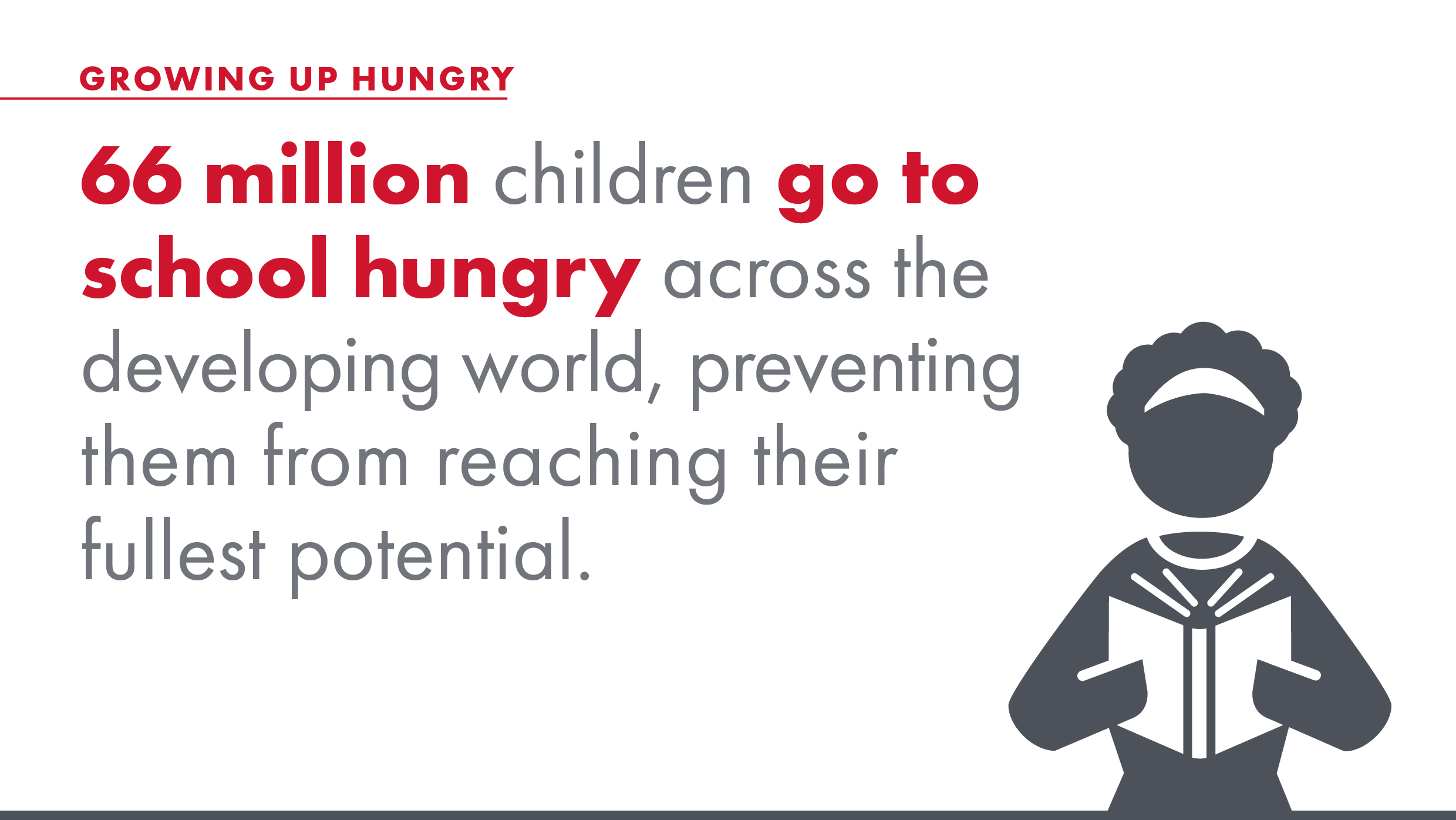
As children get older, they need enough food and nutrients to fuel their growing bodies. Unfortunately, one out of every six children in developing countries is underweight.
Children are particularly vulnerable to the effects of malnutrition and hunger because their bodies are still growing.
“If children miss milestones as they grow through their second birthday, they don’t have an opportunity to go back and catch up when the food is available,” said Bergman.
Proper nutrition also plays a role in one of the most important aspects of a child’s life — learning. Sixty-six million children attend classes every day with hungry bellies, and millions more are stunted from childhood malnutrition.
Malnutrition fact: An estimated 250 million preschool children do not get enough vitamin A. Some 250,000 to 500,000 vitamin A-deficient children become blind every year.
One in every four children under the age of 5 — or 155 million children around the world — is stunted. Impaired growth and development due to malnutrition can interrupt a child’s education in several ways. Children who are stunted do not develop at a normal pace. They often suffer from chronic malnutrition and have very little resistance to infection and disease — meaning that they’ll miss more days of school due to illness.
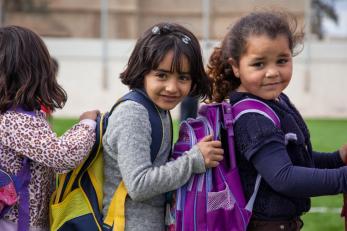
“If your brain never fully developed to its capacity, then you’re not going to get as much out of your education,” said Bergman.
Even when children aren’t stunted, they still need enough food and nutrients every day to help them focus and learn to their full potential. Malnutrition can cause mental deficits, as well as things like depression, delayed emotional development and impaired motor functions, which can make it even more difficult for children to perform well in school.
“Even on a short term basis, a lack of nutrients can affect your endurance, memory and ability to focus,” said Bergman.
In the last five years, we’ve screened more than 100,000 children and youth for malnutrition and offered treatment for a variety of related health issues. We also provide school lunches to support kids' education and healthy development in places where they are at risk of missing out on both, like Lebanon and South Sudan.
And we tackle the root causes of childhood malnutrition by helping families grow or purchase enough food — and learn how to prepare healthy and nutritious meals. This keeps children in school and able to learn to the best of their ability.
Our impact

Many of the poorest young students in Lebanon, including Syrian refugees, come to school hungry each and every day. Last year, Mercy Corps piloted a school lunch programme that worked with local businesses to make and pack healthy lunches that would keep the children full and focused.
More than 37,000 well-rounded meals were delivered to students like this young girl. “The food is filling them up with energy so they can concentrate,” said a teacher at one of the schools. “When they’re hungry they can’t really pay attention.”
Growing up hungry: Adolescents
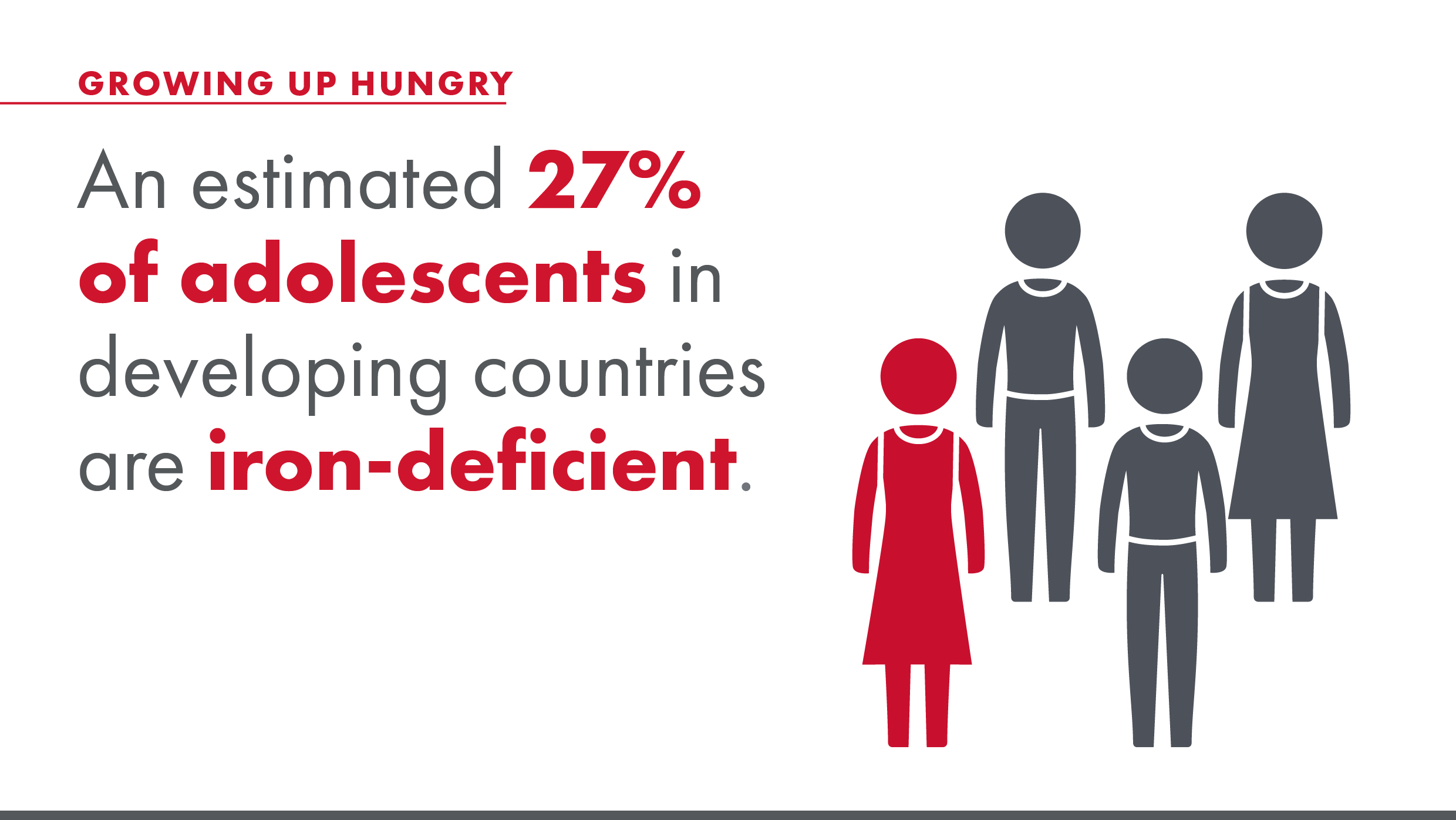
Being an adolescent anywhere in the world can be difficult — it’s a time fraught with physical and mental change. And malnutrition and hunger at this time can pose serious health risks.
Adolescence is a pivotal time that will help determine the rest of a young person’s life. Depending on what resources, like food and education, are available to them, adolescents have the power to break the cycle of poverty and in turn, the cycle of hunger.
Malnutrition fact: Nearly 50 per cent of people living in extreme poverty are 18 years old or younger.
When trapped in poverty, adolescents may face malnutrition and hunger, be forced out of school, and if they’re girls — be at risk for marrying at a young age.

Adolescent girls are vulnerable to early pregnancy. According to the United Nations Population Fund, 20,000 girls under the age of 18 in developing countries give birth every day, totalling more than 7 million births per year.
Becoming pregnant at a young age can cause serious problems for the girl’s health, and also the health of her child. If a girl is already suffering from hunger and malnutrition when she becomes pregnant, the effects can be even more damaging.
“Getting enough iron is tough as a woman, and if you’re still growing and also pregnant, it’s really hard to get enough,” said Bergman.
An estimated 27 per cent of adolescents in developing countries are iron-deficient. Women and girls who don't get enough iron can end up anemic — a condition that can cause serious complications during pregnancy. More than 30 per cent of women globally are affected by anemia.
Malnutrition fact: According to the World Health Organization, anemia contributes to about 20 percent of all maternal deaths.
To help adolescents get through this period of transition and become healthy adults, our work helps them stay in school, delay early marriage and pregnancy, and learn how to make nutritious food choices.
We also support young entrepreneurs around the world so they can start businesses and earn more income. With more income, they can grow or purchase the food they need to overcome malnutrition and hunger, and can then pass this success on to their families.
Our impact
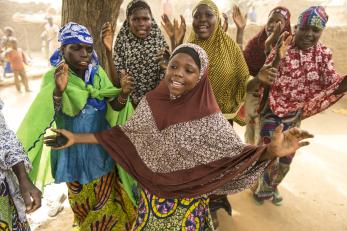
In rural Niger, where 13-year-old Badariya lives, the average age of marriage is just 15. Badariya isn’t allowed to attend school, but she does go to a Mercy Corps girls group in her village every week. There, she learns about how to make healthy choices, the risks associated with early marriage and childbirth, and how to build a financially strong future.
“My opinion is that women need to be self-sufficient in this village,” Badariya said. “I can do any kind of job I want with an education."
The girls groups are part of a larger nutrition-focused programme in Niger. By giving young girls the information and resources they need to delay marriage and be financially independent, they can grow up able to raise stronger, healthier and better-nourished families.
Growing up hungry: Adults
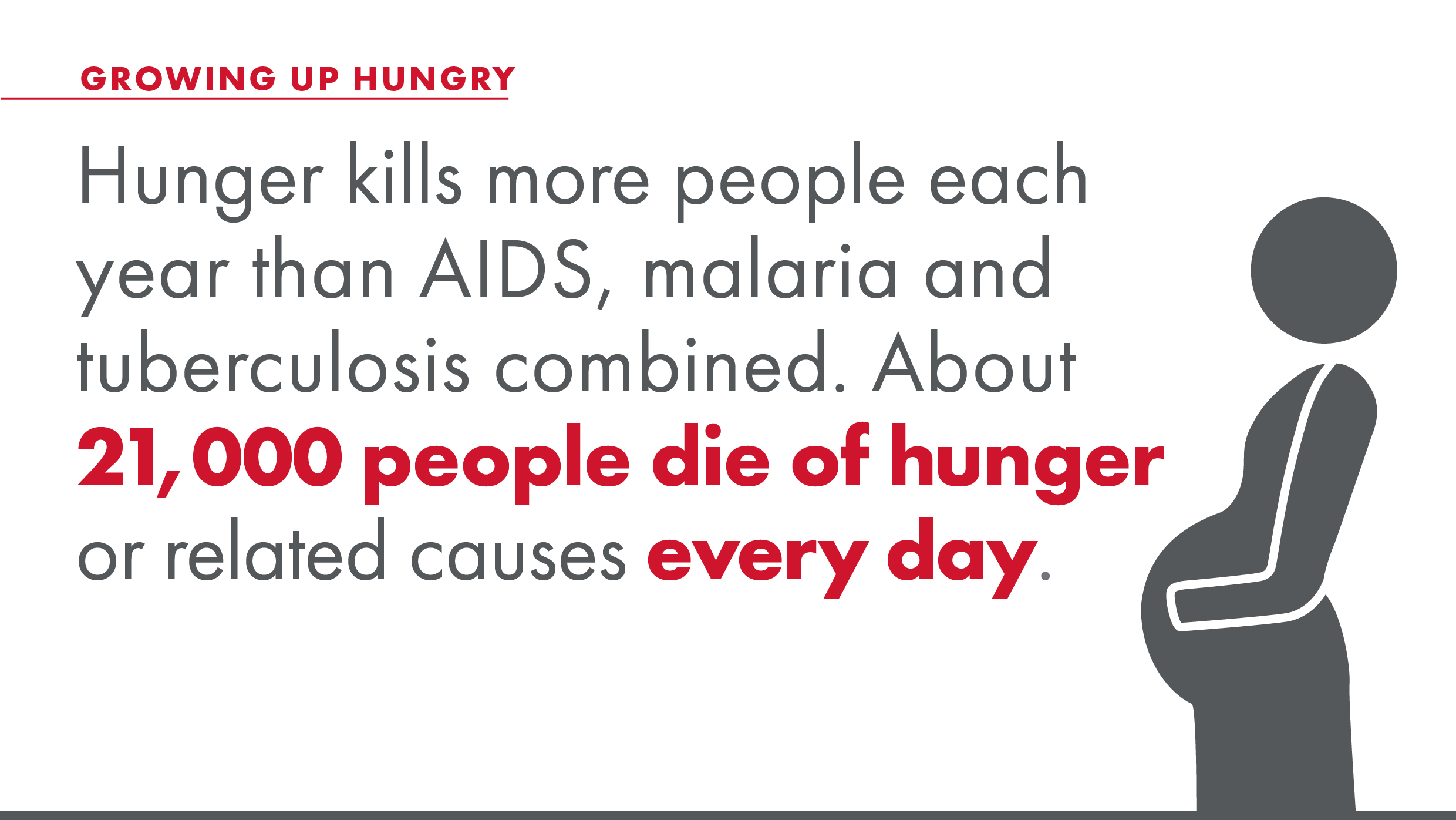
Unfortunately, the effects of hunger and malnutrition don’t end when a child reaches adulthood. Childhood malnutrition is linked to low productivity later in life. If a person was stunted as a child, they may have physical or developmental disabilities.
Many adults who suffered from malnutrition at a younger age also have chronic health problems and weaker immune systems. This means that they may get sick more often, be sick for longer, and be less able to work and provide for a family. Malnutrition costs the global economy $3.5 trillion (£2.7 trillion) every year.
Malnutrition fact: About 21,000 people die of hunger or related causes every day.
"Experiencing malnutrition as a young child creates lifelong issues, like being more prone to disease,” said Bergman. “Undernourishment as a child can mean that as an adult, a farmer may work less because of chronic illness."
While the body's growing period has stopped, it’s still critically important for adults to eat enough of the right foods to be healthy and well-nourished.
Just as missing days of school is problematic for children and adolescents, missing days of work as an adult can lead to earning less income — with less income, the family will have less food to eat and be at risk for malnutrition.
And for pregnant women around the world, the stakes are high when confronted with malnutrition. In order to have a healthy pregnancy and give birth to a healthy child, they must eat enough food, and a wide variety of foods, as well as get enough important nutrients like iron, vitamin A and folic acid.
Malnutrition fact: One out of six children is born undernourished in developing countries due to a mother’s lack of nutrition before and during pregnancy.
Even after the baby is born, proper nutrition for the mother helps ensure that her baby grows up healthy. If a mother is malnourished while breastfeeding, her baby may also be in poor health or suffer physical or developmental delays in growth.
Strengthening small business owners and local economies is one way that we help communities fight hunger and malnutrition around the world.
We also work with small farmers and home gardeners to encourage the introduction of healthy and diversified crops.
To help pregnant women and new mothers stay healthy, we have many programs that encourage breastfeeding and offer information on proper nutrition, healthy food preparation, and how to care for sick or malnourished babies.
Our impact
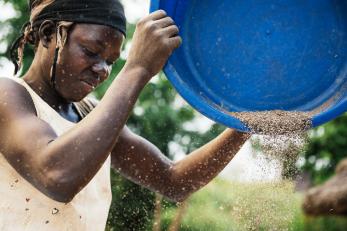
Concy and her husband, Charles, are trying something new on their homestead in Uganda: growing chia seeds. With training and support from Mercy Corps, the couple has already seen success growing this new and unusual food, which is rich in healthy fats.
Because of chia’s high market value, Concy and Charles are earning more income. They can now use the extra funds to feed their children a healthy diet, pay for school fees and eventually build a new home. “I am so hopeful for the future,” said Charles.
Hunger and malnutrition: A global problem
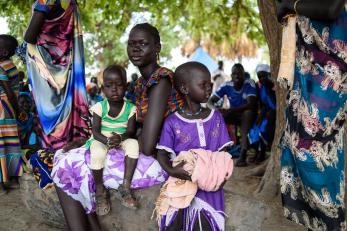
Right now, there is enough food in the world for every single person to lead a healthy, productive life. But factors like poverty, climate change, gender inequality and conflict are still preventing much of the world from getting what they need.
That means the cause of hunger and malnutrition in many places is not a lack of food — it’s that the people who need food the most simply don’t have steady access to it.
In countries like Yemen and South Sudan, which are both in the midst of years-long wars, ongoing violence prevents food and others supplies from reaching markets. Clashes also frequently send families running for safety, forcing them away from their farms and other resources. A combined 23 million people in South Sudan and Yemen are living with hunger.
Poverty is also a key factor that keeps food from families and leads to malnutrition around the world. A person’s economic status plays a critical role in whether or not they have enough food for themselves, or to feed a family. As one of the most financially unequal countries in the world, Guatemala has the highest rate of child stunting in all of Latin American and the Caribbean, with up to 90 per cent of children being malnourished in the poorest, most marginalised communities.
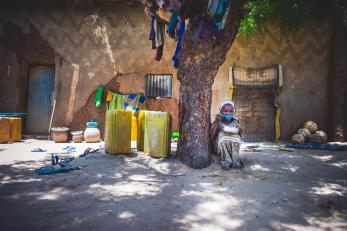
And in places like Nepal and Niger, where a heavy reliance on agricultural livelihoods combines with extreme poverty, climate change is fueling recurring and unpredictable weather disasters that destroy food sources and drive up the risk of malnutrition.
But even if those factors that prevent access to food disappeared, we will still need to increase production to keep up with the rise in world population.
By 2050 the world population is expected to reach nearly 10 billion. Food production will need to double to provide enough food for everyone to eat.
“There was a lot of agricultural development in the last century, and agricultural productivity soared,” said Bergman. “But in the last 20-30 years that investment slowed down. Agricultural productivity is leveling off but our population is growing.”
All these factors combined mean ending global hunger and malnutrition requires more than one solution: We must ensure that people have the nutrients they need to stay healthy — and also the right support and tools to build a stronger economic future for themselves.
Mercy Corps currently operates roughly 60 food-focused programmes in more than 30 countries around the world. This work helps individuals and families meet their own food needs and improves access and availability of healthy foods in their communities.
Together, we can make a difference
Last year, the U.N. reported that the number of hungry people in the world has risen to approximately 815 million — the first increase after years of progress. While this number is an unfortunate setback, we’ve still seen significant improvement in the last 25 years.
About 2 billion people were freed from hunger between 1990 and 2015. The work that we do, thanks to your support, does make a difference for families around the world — and we must keep up our efforts to make sure the numbers don’t continue to increase.
In the last five years, we have improved access to nutritious food for more than 30 million people and provided nutrition and health training to hundreds of thousands of people who are now better positioned to keep their families healthy. Each year, we also help about 1 million small farmers improve their agriculture techniques so that they can grow more food and earn higher incomes.
Our holistic approach to combating hunger and malnutrition is only possible because of you. Thanks to your support, farmers are boosting their harvests, young adults are starting their own businesses, girls are able to stay in school, and mothers have the knowledge they need to keep their babies healthy.
If we continue to fight the root causes of hunger and malnutrition — poverty, limited access to food, and inequality — we can make a difference together in the fight against global hunger.